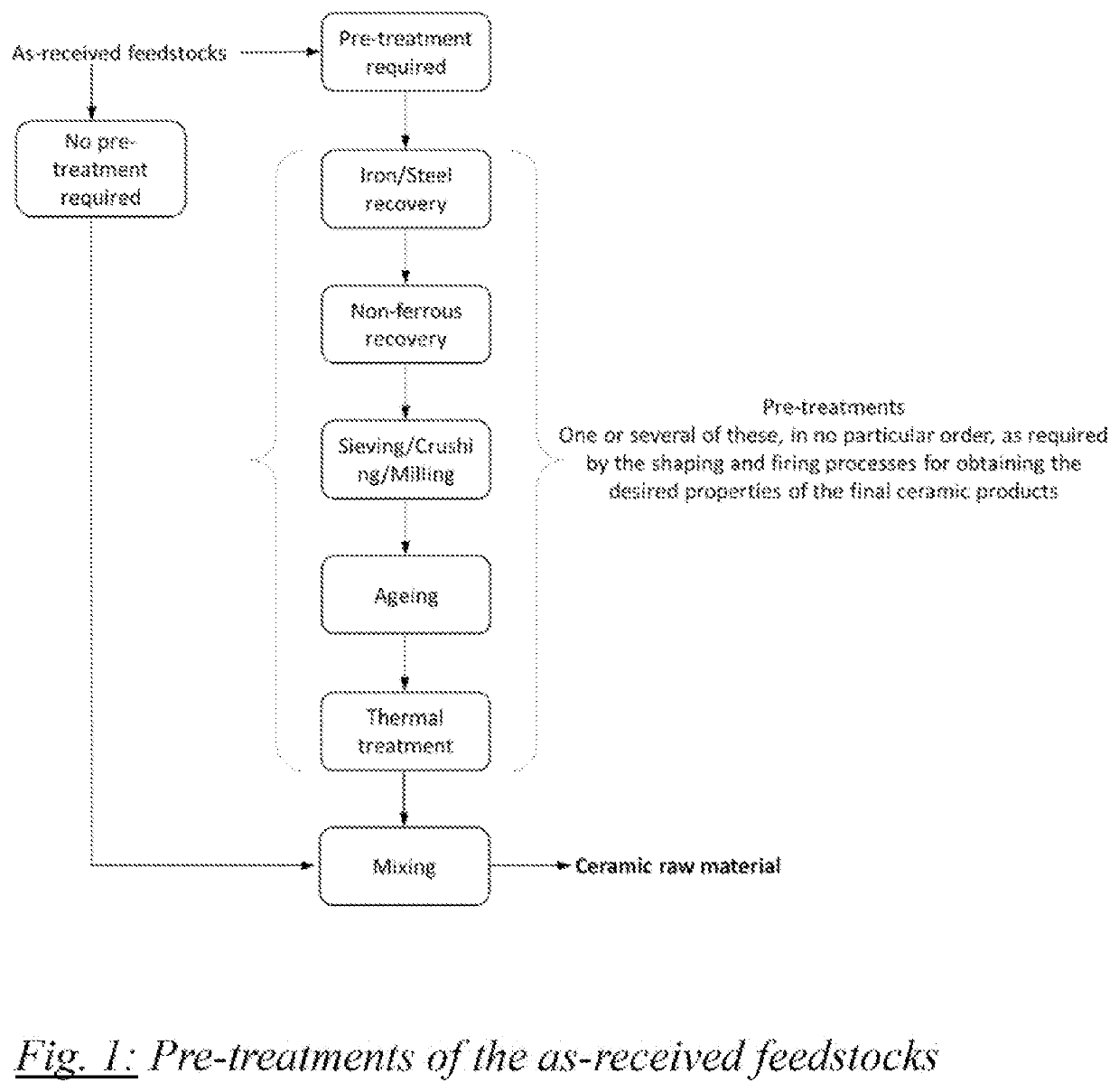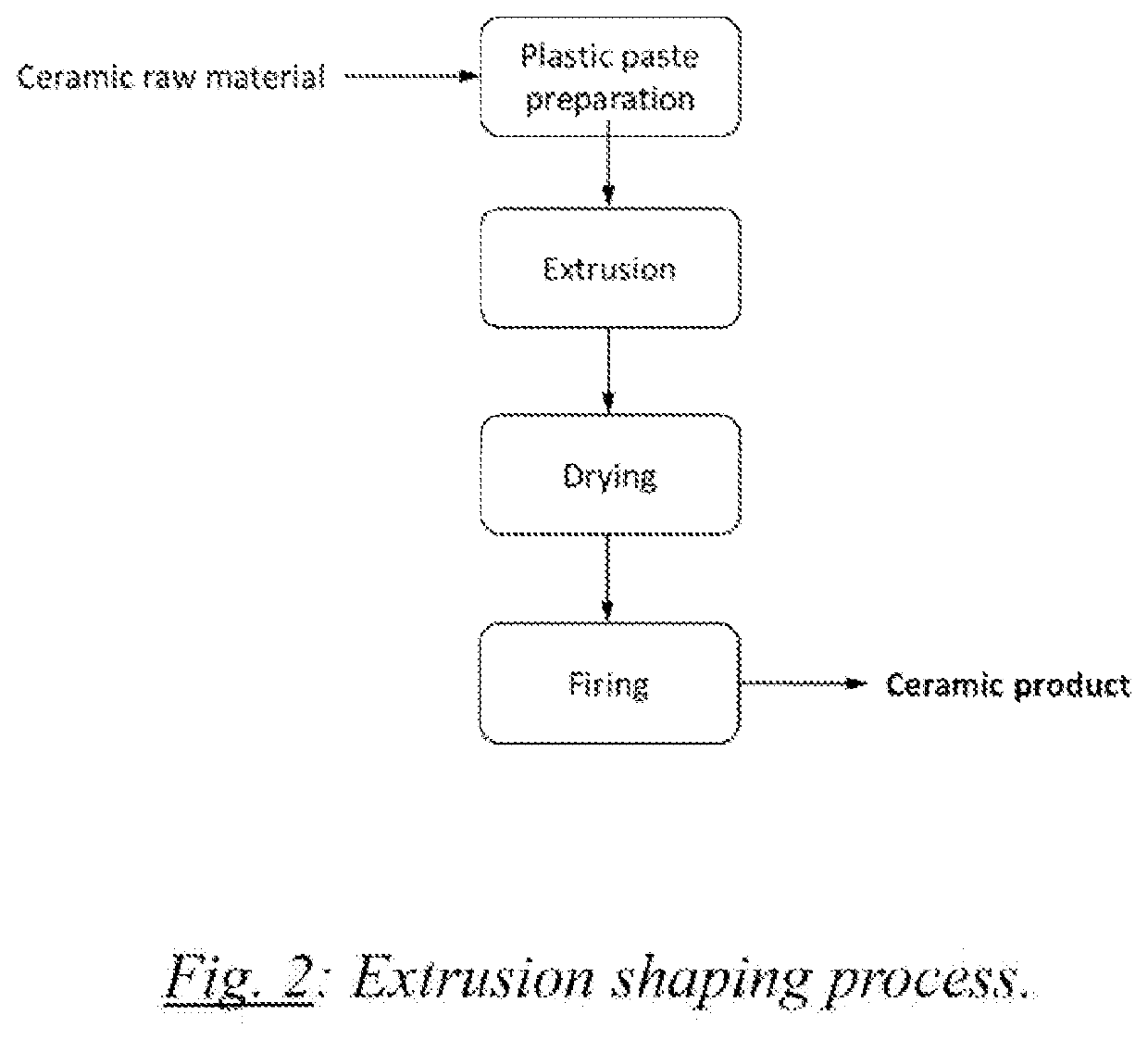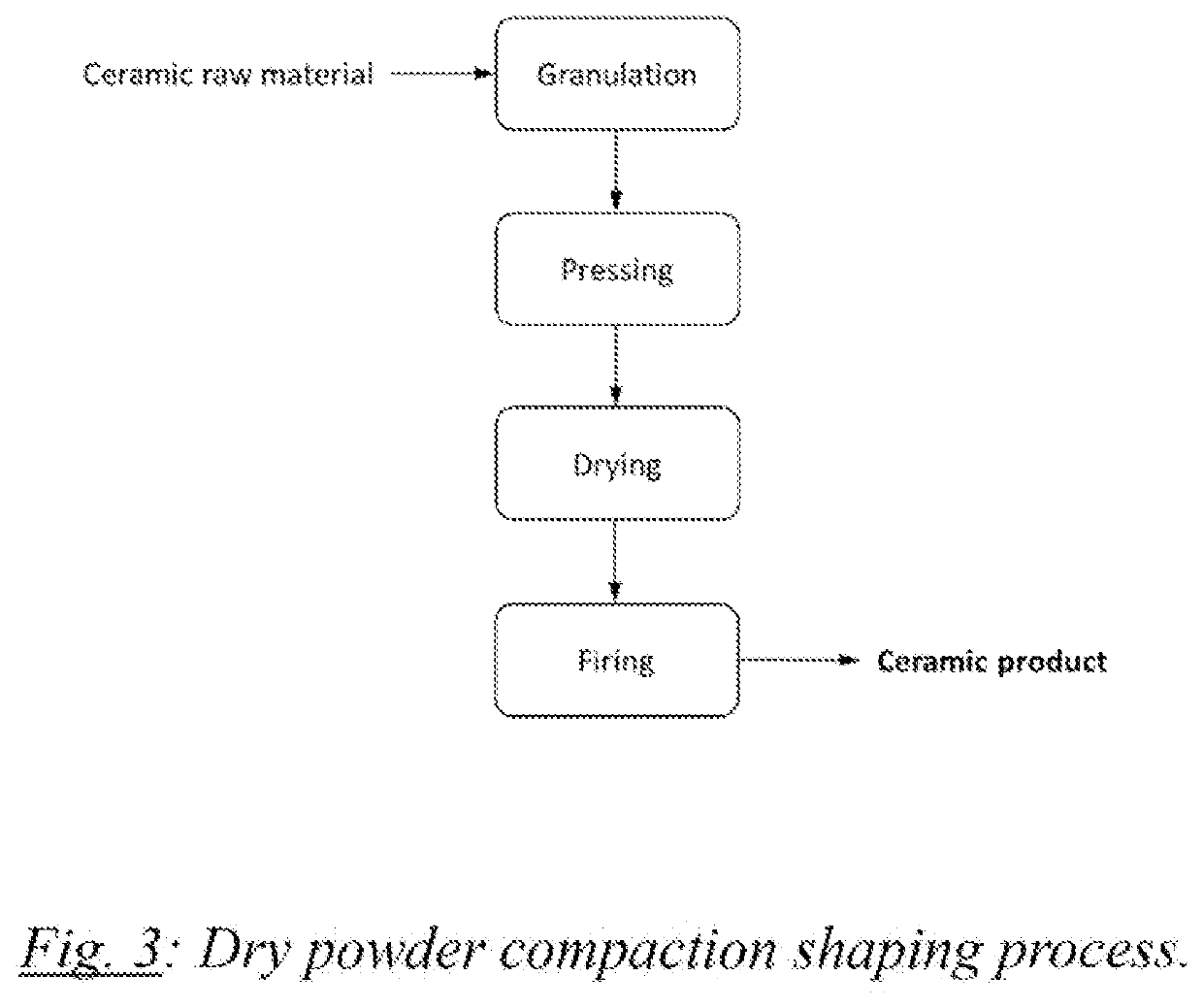Industrial solid waste based construction and technical ceramics
a technology of industrial solid waste and construction, applied in the field of ceramics, can solve the problems of increasing the overall production cost, environmental and sanitary problems, and using useful land
- Summary
- Abstract
- Description
- Claims
- Application Information
AI Technical Summary
Benefits of technology
Problems solved by technology
Method used
Image
Examples
experimental example # 1
EXPERIMENTAL EXAMPLE #1
Dry Powder Compaction: MSWIBA (80 wt. %) and URCM (20 wt. %)
[0143]Municipal Solid Waste Incinerator Bottom Ash (MSWIBA) was collected as gravel between 0 mm to 40 mm and considered as post-treated gravel. Pre-treatment included: (1) crushing the raw MSWIBA from a range between 0 mm to 100 mm as coarse aggregate to a gravel using a jaw crusher with a range between 0 mm to 40 mm, then (2) magnetic removal of iron and steel, then (3) magnetic removal of non-ferrous metals and finally (4) aging during 4 months. The moisture content of this material was around 7 wt. %.
[0144]the MSWIBA was dried in an oven with forced air circulation at 120° C. during 12 hours, before being crushed, using a jaw crusher (Retsch BB 50) to obtain a powder in the range between 500 ∥m to 1 mm. The resulting powder was milled using a ball miller (Retsch PM 100) during 1 hour, and sieved using sieves and a sieve shaker. The final powder presented itself as a grey powder, with a particle di...
experimental example # 2
EXPERIMENTAL EXAMPLE #2
Extrusion: MSWIBA (70 wt. %) and URCM (30 wt. %)
[0151]Municipal Solid Waste Incinerator Bottom Ash (MSWIBA) was collected as gravel between 0 mm to 40 mm and considered as post-treated gravel. Pre-treatment included: (1) crushing the raw MSWIBA from a range between 0 mm to 100 mm as coarse aggregate to a gravel using a jaw crusher with a range between 0 mm to 40 mm, then (2) magnetic removal of iron and steel, then (3) magnetic removal of non-ferrous metals and finally (4) aging during 4 months. The moisture content of this material was around 7 wt. %.
[0152]The MSWIBA was dried in an oven with forced air circulation at 120° C. during 12 hours, before being crushed, using a jaw crusher (Retsch BB 50) to obtain a powder in the range between 500 μm to 1 mm. The resulting powder was milled using a ball miller (Retsch PM 100) during 1 hour, and sieved using sieves and a sieve shaker. The final powder presented itself as a grey powder, with a particle distribution d...
experimental example # 3
EXPERIMENTAL EXAMPLE #3
Dry Powder Compaction; MSWIBA (70 wt. %), URCM (25 wt. %), and Fired Ceramic Materials (5 wt. %)
[0158]Municipal Solid Waste Incinerator Bottom Ash (MSWIBA) was collected as gravel between 0 mm to 40 mm and considered as post-treated gravel. Pre-treatment included; (1) crushing the raw MSWIBA from a range between 0 mm to 100 mm as coarse aggregate to a gravel using a jaw crusher with a range between 0 mm to 40 mm, then (2) magnetic removal of iron and steel, then (3) magnetic removal of non-ferrous metals and finally (4) aging during 4 months. The moisture content of this material was around 7 wt. %.
[0159]The MSWIBA was dried in an oven with forced air circulation at 120° C. during 12 hours, before being crushed, using a jaw crusher (Retsch BB 50) to obtain a powder in the range between 500 μm to 1 mm. The resulting powder was milled using a ball miller (Retsch PM 100) during 1 hour, and sieved using sieves and a sieve shaker. The final powder presented itself ...
PUM
| Property | Measurement | Unit |
|---|---|---|
| size | aaaaa | aaaaa |
| size | aaaaa | aaaaa |
| time | aaaaa | aaaaa |
Abstract
Description
Claims
Application Information
 Login to View More
Login to View More - R&D
- Intellectual Property
- Life Sciences
- Materials
- Tech Scout
- Unparalleled Data Quality
- Higher Quality Content
- 60% Fewer Hallucinations
Browse by: Latest US Patents, China's latest patents, Technical Efficacy Thesaurus, Application Domain, Technology Topic, Popular Technical Reports.
© 2025 PatSnap. All rights reserved.Legal|Privacy policy|Modern Slavery Act Transparency Statement|Sitemap|About US| Contact US: help@patsnap.com



